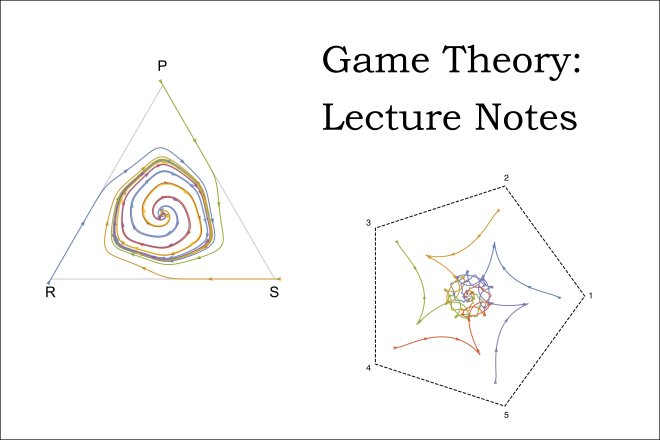Game Theory: Lecture Notes

Credit: Image adapted from figures by Christopher Griffin and is licensed under CC BY-NC-SA 3.0 US
Resource Description
This is version two of a set of lecture notes for MATH 486, Penn State's undergraduate Game Theory course. Game Theory is the study of decision making under competition. The first truly mathematical study of Game Theory was initiated by Von Neumann and Morgenstern. John Nash (of A Beautiful Mind fame) added substantially to the field with his proof of the existence of equilibrium solutions for general sum games. Since then many mathematicians, economists, engineers and others have made substantial contributions to the study of games.
The lecture notes are loosely based on Luce and Raiffa's Games and Decisions: Introduction and Critical Survey. This is the same book John Nash used when he taught (or so I've heard). There are elements from Myerson's book on Game Theory (more appropriate for economists) as well as Morris' book on Game Theory. Naturally, I've also included elements from Von Neuman and Morgenstern's classic tome.
This set of notes tries to present the material in a format for that can be used easily in an undergraduate mathematics class. Many of the proofs in this set of notes are adapted from the textbooks with some minor additions. One thing that is included in these notes is a treatment of the use of quadratic programs in general sum games two player games. This does not appear in many textbooks. Also treating Nash Bargaining as a multi-objective optimization problem is somewhat novel here.

